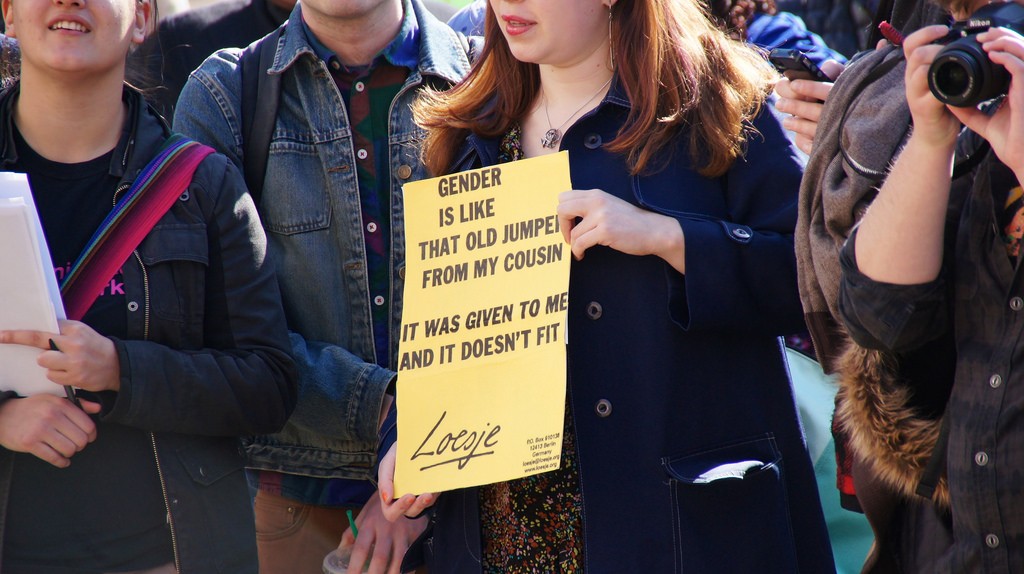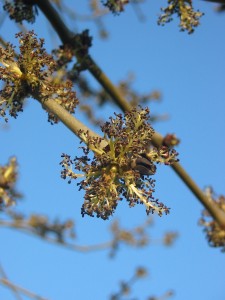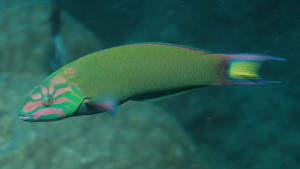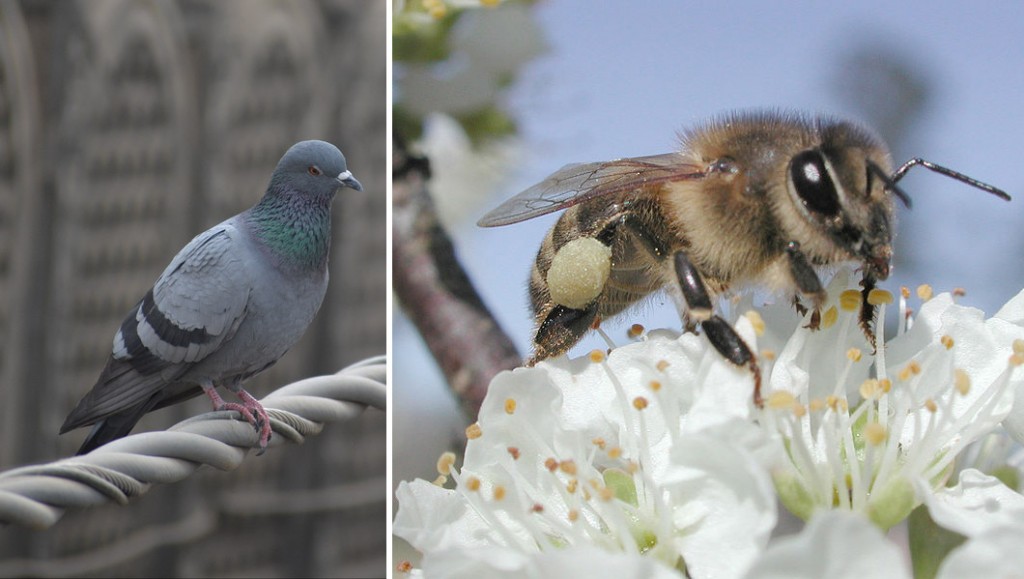Birds and Bees 2.0

Sign at a rally for transgender equality. Photo: Ted Eytan, Creative Commons, some rights reserved
I once heard a quote to the effect that our children help us finish growing up. I do feel I’ve learned more from my kids than they likely have from me. Patience, acceptance, a shift of perspective as to what is important in life – those are but a few of the lessons my children instilled in me. But it was a real surprise that my son taught me a thing or two on the birds and bees.
A number of times he brought college friends home to visit, including one who did not identify as any gender. I was asked to use the pronouns they, their, and them when referring to them. This was new, and confusing: if my son spoke of bringing home company, I wasn’t sure if “they” meant a crowd, or his non-binary friend.

Lesson two: This is a cutaway view of an automatic transmission. If you need a colloquial expression for it, try “gearbox.” Photo: Silverxxx, Creative Commons, some rights reserved
Lesson two nearly got me killed on my son’s campus. As a favor, I diagnosed his roommate’s car, pointing out that a leaky return line was the source of his tranny problems. A passer-by overheard this and confronted me, enraged. Luckily she accepted my Old Guy defense; that I had no clue “tranny,” which meant transmission when I was a kid, was an offensive term for transgendered people. (Afterwards, my son explained transgender…)
While having no fixed gender or switching later in life is not very common among humans, it is the norm in large swaths of the natural world.

Ash tree in flower. If trees of the opposite sex are uncommon, some will transition. Photo: Donar Reiskoffer, Creative Commons, some rights reserved
Recently I taught a botany class, and mentioned that ash trees are usually either pollen-bearing male trees or flower-bearing females. But if gender ratios in a certain locale are skewed—for example if female trees are relatively scarce—some of the male trees become females, permanently. This is because ash trees are polygamo-dioecious. A few of the students thought polygamo-dioecious sounded sketchy, but I assured them it is legal in all 50 states.
This got me thinking about other creatures which start out as one sex, but later switch to another. Turns out this is a popular pastime in the marine world. Clownfish are a great example, with the males very often becoming females when they get older. (I assume this is why Finding Dory came after Finding Nemo.) They don’t just take on the behavior of females, they actually develop ovaries and reproduce as females.
 It can go the other way, too. Wrasse are fish which stake out coral reefs, trying to find Nemo, Dory, or any other clownfish to eat. Female wrasse often change into males, but unlike with clownfish, they can change back. It is an example of protogynous hermaphroditism. And also of females changing their mind a lot. I won’t even start on which kinds of animals routinely adopt the behavior of the opposite sex, because the list includes nearly all species, including primates.
It can go the other way, too. Wrasse are fish which stake out coral reefs, trying to find Nemo, Dory, or any other clownfish to eat. Female wrasse often change into males, but unlike with clownfish, they can change back. It is an example of protogynous hermaphroditism. And also of females changing their mind a lot. I won’t even start on which kinds of animals routinely adopt the behavior of the opposite sex, because the list includes nearly all species, including primates.
Invertebrates such as worms, slugs, and snails are typically hermaphrodites, with each individual having both male and female characteristics. There is a species of mollusk called Crepidula fornicata, or common slipper shell, which pile on top of one another in a precarious tower to, you know—visit with their upstairs and downstairs neighbors. At the same time.
A few earthworms, and many insects, are parthenogenic, which has nothing to do with worshiping at the Temple of Athena. It means they are females who have figured out how to make babies without the fuss and muss of having to deal with guys. In parthenogenesis, females give birth only to other females, and so on down the line. If you’ve ever had scale insects on a houseplant, chances are they were all female. Makes it easy for one to go off and found a whole new empire single-handedly. A figurative hand, of course. Snakes, salamanders, sharks, and a few other vertebrate species do this, too, although it seems to be a temporary thing with many of them.

Ironically, both birds and bees can also be parthenogenic or hermaphroditic. Photos: pigeon, Jon Ascton; honeybee, Aphaia,Creative Commons, some rights reserved
In an ironic twist to the clichéd (and horribly flawed) “birds and bees” metaphor for explaining sexuality, researchers have found that birds as well as bees can be parthenogenic and hermaphroditic. To my knowledge, though, not both at the same time.
The more we learn about the natural world, the more we find that things we had assumed were rare or aberrant are in fact remarkably common. And that clearly they are created in such fashion—clownfish do not choose a lifestyle or decide to switch preferences. And as my kid once pointed out to me, the human animal (we are primates, after all) are plenty complex too.
If you have children, hopefully you’ll be lucky enough to get a “Birds and Bees” talk from one of them someday when they grow up. You can really learn a lot.
Paul Hetzler is a horticulture and natural resources educator with Cornell Cooperative Extension of St. Lawrence County.
Tags: gender








And this nonsense is why Donald Trump was elected president and carried the north country.
And that passer-by should have been told to mind their own business.